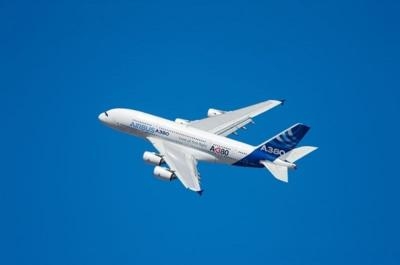Region’s Largest Market Represents 35 Percent Of Latin America’s Air Traffic
According to the latest Airbus Global Market Forecast (GMF) the Brazilian air travel market will need 1,324 aircraft by 2032 to address the country’s rising international and domestic air travel requirements. The 896 single-aisle, 353 twin-aisle and 75 very large aircraft (VLA) are forecast to help meet the rising demand from domestic and foreign carriers in Brazil almost tripling the in-service fleet from today’s 480 to more than 1320 aircraft by 2032.

With a GDP forecast to grow at 4 percent annually, above the world average of 3.1 percent, socioeconomic trends suggest Brazil’s economy will more than double over the next 20 years. Brazil’s air traffic is expected to follow suit, growing at an annual rate of 6.8 percent by 2032, far exceeding the world average of 4.7 percent.
Driven by a growing middle class, increased consumer spending as well as a booming tourism sector, Brazil represents 35 percent of all Latin America’s air traffic, making it the region’s largest and amongst the fastest growing markets, having more than doubled since 2000. Since then, international traffic alone has increased at an impressive 87 percent. As the market has grown, carriers from Brazil have been unable to benefit at the same pace as foreign carriers such as those from Europe and North America.
More than 40 percent of South America’s long-haul traffic arrives through three Brazilian airports, including Guarulhos International Airport in Sao Paulo which is the number one international airport for long-haul traffic in Latin America. Very large aircraft such as the A380, would be ideal aircraft for these cities with their high density traffic including Rio. VLAs can carry more passengers with fewer flights, while meeting the international air traffic requirements needed to serve long-haul flights to Europe and North America.

“With nearly half of the region’s long-haul traffic going through Brazil, the A380 could alleviate traffic congestion at busy airports, such as Guarulhos , which represents 25 percent of total international traffic in Latin America,” said John Leahy, Airbus Chief Operating Officer, Customers. “The A380 would also support the huge tourism flows expected around the upcoming football World Cup and the Olympic Games.”
The country’s domestic air traffic market has grown an impressive 2.4 times since 2000, consolidating Brazil’s position as the fourth largest domestic market in the world by 2032, only surpassed by China, the United States and India.
Airlines in Brazil are also operating some of the newest and most efficient aircraft in the world. With an average age of seven years, 34 percent lower than the world's average, Brazil is leading a regional trend. The average age of Latin America’s in-service fleet is currently 9.5 years, down 42 percent since 2000.
In Latin America, Airbus foresees a 20-year demand for more than 2,307 new aircraft, including 1,794 single-aisle, 475 twin-aisle and 38 very large aircraft, estimated at approximately $292 billion. Globally, by 2032 some 29,230 new passenger and freighter aircraft valued at nearly US$4.4 trillion will be required to satisfy future robust market demand.
 ANN's Daily Aero-Linx (05.02.24)
ANN's Daily Aero-Linx (05.02.24) ANN's Daily Aero-Term (05.02.24): Touchdown Zone Lighting
ANN's Daily Aero-Term (05.02.24): Touchdown Zone Lighting Aero-News: Quote of the Day (05.02.24)
Aero-News: Quote of the Day (05.02.24) ANN FAQ: Contributing To Aero-TV
ANN FAQ: Contributing To Aero-TV NTSB Final Report: Cirrus Design Corp SR20
NTSB Final Report: Cirrus Design Corp SR20




